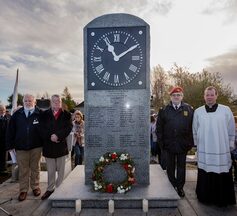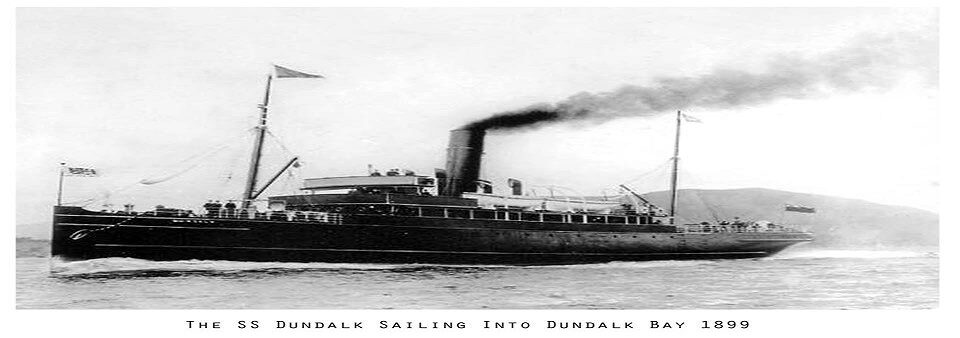EI100SSD - SS Dundalk Special Event Callsign
As part of the official TSS Dundalk Centenary Commemorations and following discussions and permissions, the Dundalk Amateur Radio Society has obtained a Special Event Amateur Radio Licence from ComReg, the Irish National Regulator, which will allow the use of the special call sign "EI100SSD" to be used on all bands from 160m to 70cms and will be active before, during and after the actual Commemoration date.
On 14th October 1918 a German U-boat attacked and sank the SS DUNDALK, a merchant ship that sailed from Dundalk on its way from Liverpool. The strike happened 17 miles south of the Isle of Man. It carried crew, passengers and freight.
The crew on board the vessel were from the locality of Dundalk, Newry and Drogheda. One man, a gunner called Harold Grey from the Royal Navy Reserve, was from Wales. An attempt to attack the SS Dundalk had been made the previous December 1917, but with the clever tactics of Captain O'Neill the vessel was able to avoid disaster and continue its run between the two countries.
Around the time of the sinking, the flu epidemic raged across the country, and over 1000 people were reported to be suffering in the Dundalk area alone. Because of this some of the normal crew were off sick and were replaced for the journey on 14th. One man, Paddy Hanratty, was hospitalised in Liverpool and had died, and his body was on the ship returning to Dundalk. The was also a number who had taken to the bed whilst on board, due to being ill with flu.
On the 10th of October 1918 the RMS Leinster, had been attacked in Dublin Bay by the U-boat U123 with an enormous loss of life.
On the 14th of October, four days after the RMS Leinster, the U-boat U90 sank the SS Dundalk. Of the 20 people that lost their lives, one was only 17 years of age (Peter Valentine Sloane), the Captain of the vessel, Captain O'Neill stayed on the bridge of his ship as she went down, and one of the owners of the company, Mr Samuel Cocks was also on board. One lady, Margaret Creegan, a ship Stewardess who worked for the company for many years, was one of 58 women who died on active service during WW1. There were a number of survivors, including one man, First Mate John Joseph Higgins, who was heroic in his attempt to save many lives that night.
A plane was flying overhead the following day, and spotted the men floating and a rescue vessel the SS Douglas was sent out from the Isle of Man to pick up the survivors, and bring them back to the Isle of Man, where they were looked after very well, having suffered very badly from the cold and hunger.
The sinking of the SS Dundalk had a huge impact on the town of Dundalk and news of the tragedy was reported in the New York Times. Many of those lost had wives and children, and a trust fund was set up to look after the families after the tragedy. Many descendents of those who lost their lives and those who survived, still live in the Dundalk area, and many of these families can still recall the stories handed down of that fateful night.
The wreck site of the SS Dundalk lies in 60 metres of water, 17 miles south of the Isle of Man.
It has been visited by divers, who in 2010 took artefacts off her and presented them to the Louth County Museum. A memorial plaque and a capsule containing momentums from the relatives were placed on the wreck during one of their dives.
Paypal - QSL Card
SS Dundalk - Links

Charley McCarthy Chairman of the SS Dundalk Committee, Kevin O'Neill Grandson of Captain Hugh O'Neill, Damien Higgins Grandson of First Mate John Higgins with Fr Mark O'Hagan
